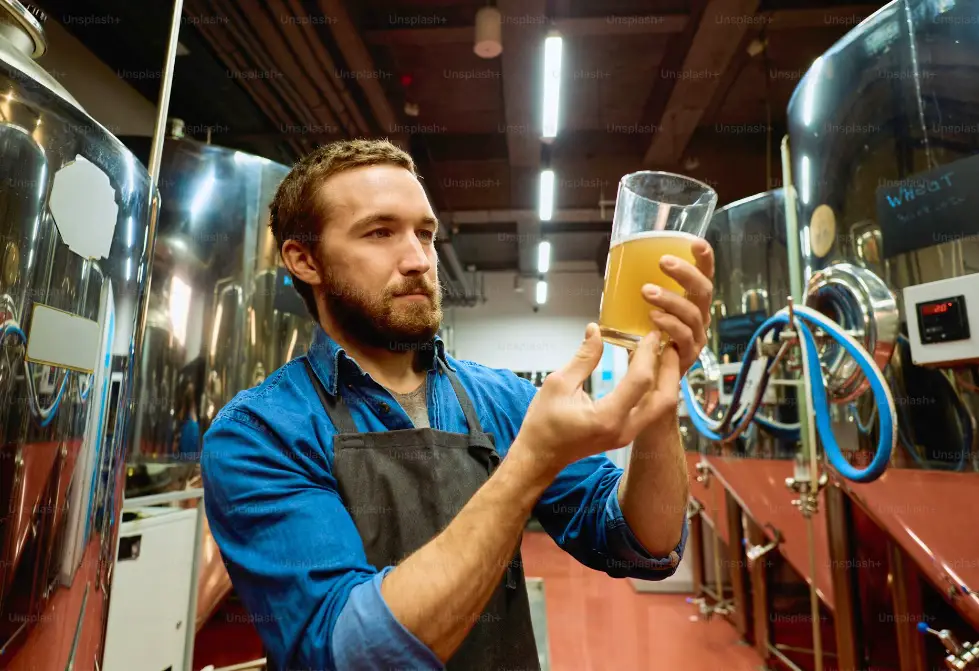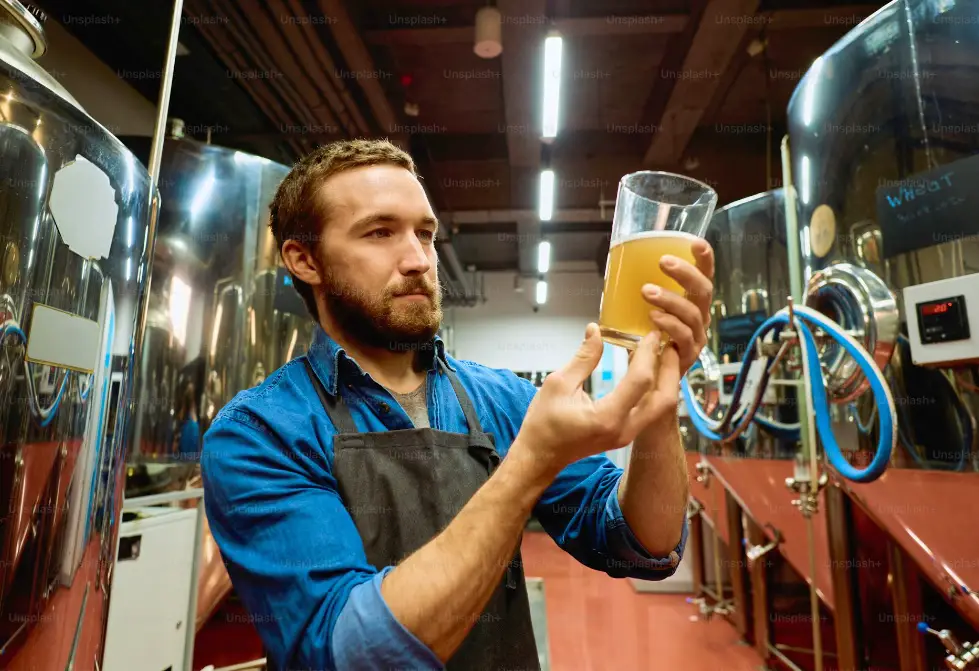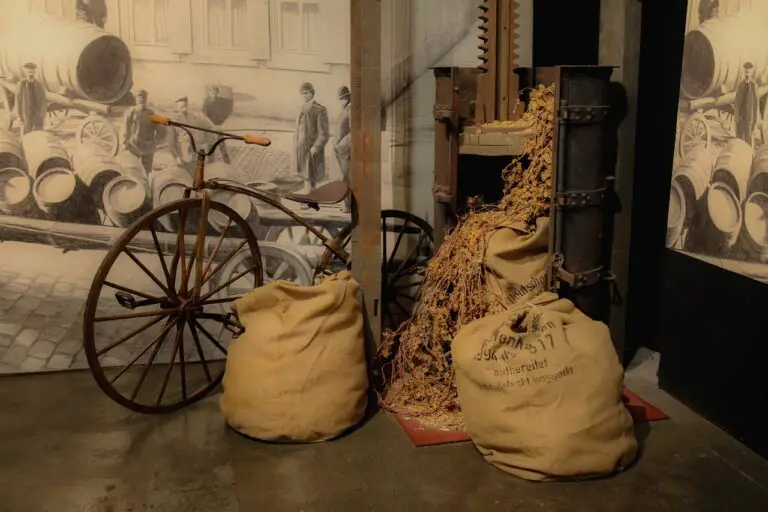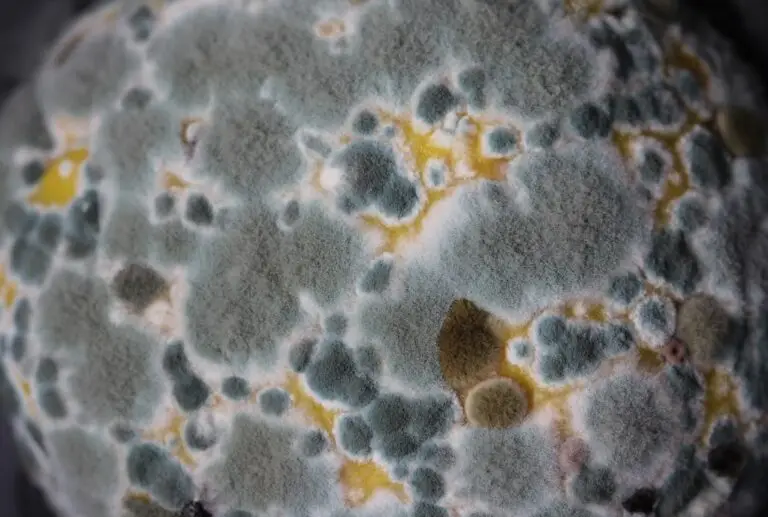How Is Beer Pasteurized?
So, is beer pasteurized? Yes, some beers are pasteurized, but how? How is beer pasteurized? Let’s see!
Some beers undergo pasteurization to ensure stability and prevent spoilage. The pasteurization process typically involves exposing the beer to heat to eliminate harmful microorganisms without significantly affecting its flavor.
Follow us on Instagram!
Two common methods are flash pasteurization, where the beer is rapidly heated and cooled, and tunnel pasteurization, where it passes through a heated tunnel. Cold pasteurization methods, such as filtration and ultraviolet (UV) treatment, are also employed to achieve microbial control without heat.
The choice of pasteurization method depends on the beer type, desired flavor profile, and the brewer’s preferences for maintaining product quality.

What is Pasteurization? Why is Pasteurization Important?
Pasteurization is a process named after French scientist Louis Pasteur, involving the application of heat to liquid or food products to eliminate or reduce the presence of harmful microorganisms like bacteria, yeast, and molds. In the food and brewing industry, pasteurization serves a crucial role in ensuring product safety, quality, and shelf stability.
By exposing the substance to heat for a specific time, the process effectively destroys pathogenic microorganisms, preventing spoilage and extending the product’s shelf life. In the brewing industry, pasteurization helps maintain the integrity of beer by eliminating unwanted microbes without compromising its flavor.
Pasteurization is a key step in the production process, contributing to the consistency and safety of the final product, especially in mass production and distribution scenarios.

Pasteurization in Beer Production
Pasteurization in brewing is a vital step to ensure the quality and stability of beer. This process involves heating the beer to eliminate or reduce harmful microorganisms, preventing spoilage and maintaining freshness.
There are various pasteurization methods, such as flash pasteurization and tunnel pasteurization, where the beer is exposed to heat and then rapidly cooled.
Cold pasteurization methods, including filtration and ultraviolet (UV) treatment, are also employed.
By carefully choosing the pasteurization method, brewers can strike a balance between preserving the beer’s integrity and meeting safety and shelf-life requirements. This crucial step allows breweries to produce consistent and microbiologically safe beer for consumers.

A. Heat Pasteurization in Brewing
1. Flash Pasteurization
Flash pasteurization is a method where beer is rapidly heated to a high temperature, usually around 161°F (72°C), for a short duration—typically around 15-20 seconds—followed by rapid cooling.
The process effectively eliminates unwanted microorganisms without causing significant alterations to the beer’s flavor profile. During flash pasteurization, the beer is quickly heated in a heat exchanger, and then promptly cooled, minimizing the exposure time to heat.
Benefits and drawbacks of flash pasteurization include its efficiency in destroying harmful microbes while preserving the beer’s sensory qualities. The quick process reduces the risk of flavor changes compared to traditional heat pasteurization methods.
However, some argue that flash pasteurization may not completely eliminate all spoilage organisms, and there is a risk of incomplete pasteurization if not executed precisely.
2. Tunnel Pasteurization
Tunnel pasteurization involves conveying bottled or canned beer through a heated tunnel at a controlled speed. The beer is subjected to a specific temperature for a longer duration compared to flash pasteurization, usually between 140°F to 160°F (60°C to 71°C), ensuring thorough pasteurization. The cooling phase follows, stabilizing the beer before packaging.
Tunnel pasteurization finds widespread application in the brewing industry, especially for large-scale production and packaging processes. It’s particularly effective for bottled and canned beers, providing a comprehensive and consistent pasteurization process.
While it might be perceived as less time-efficient than flash pasteurization, tunnel pasteurization is advantageous for its reliability in achieving a high level of microbial control and ensuring product stability during extended shelf life.

B. Cold Pasteurization
1. Filtration
Filtration in cold pasteurization involves passing beer through various filtration media to remove microorganisms and particulate matter. The process typically uses membranes with fine pores to physically strain out bacteria, yeast, and other undesirable elements.
Filtration can be achieved through different methods, such as depth filtration or membrane filtration, providing brewers with flexibility in choosing the level of filtration based on their desired beer characteristics.
Filtration is highly effective in removing contaminants, including spoilage microorganisms, sediments, and haze-forming particles. It is a cold pasteurization method, ensuring that the beer’s temperature remains relatively unchanged during the process.
However, while filtration is excellent for microbial control, it may also remove some desirable flavor compounds, potentially impacting the beer’s overall taste.
2. Ultraviolet (UV) Pasteurization
UV pasteurization utilizes ultraviolet light to deactivate the DNA of microorganisms, rendering them unable to reproduce. In the brewing context, UV pasteurization systems expose beer to controlled doses of UV light, targeting bacteria, yeast, and molds. This method is considered a cold pasteurization technique since it doesn’t involve heat.
Pros of UV pasteurization in beer production include its ability to eliminate microorganisms without affecting the beer’s temperature or flavor profile. UV pasteurization is also a chemical-free process, avoiding the use of additives.
However, drawbacks include the dependence on the transparency of the beer, as UV light penetration may be hindered by turbidity or dark-colored beers.
Additionally, while UV treatment effectively reduces microbial populations, it may not completely eliminate all microorganisms, requiring careful monitoring and supplementary control measures.

Pasteurization by Beer Styles
Pasteurization in beer production is influenced by the type of beer and its specific characteristics. Different beer types, such as ales, lagers, stouts, and other varieties, may undergo pasteurization methods tailored to their unique brewing requirements.
- Ales are typically fermented at warmer temperatures and often showcase a diverse range of flavors imparted by ale yeast strains. Pasteurization methods for ales need to strike a balance between preserving the beer’s distinctive taste and ensuring microbiological stability. Flash pasteurization or cold pasteurization techniques like UV treatment might be employed to maintain the ale’s flavor complexity.
- Lagers undergo a cooler fermentation process, resulting in a clean and crisp taste. Due to their lighter and more delicate flavor profile, lagers are often subjected to pasteurization methods that minimize the impact on taste. Tunnel pasteurization, with its controlled and extended exposure to heat, is commonly used for lagers to ensure thorough microbial control without compromising the beer’s subtle characteristics.
- Stouts, known for their robust and often rich flavors, require pasteurization methods that can preserve these characteristics. Depending on the desired end product, brewers may opt for pasteurization techniques that minimize heat exposure, such as flash pasteurization or cold pasteurization through filtration. This helps maintain the distinct maltiness and complexity of stouts.
- Specialty and craft beers encompass a wide range of styles, each with its own unique flavor profile. Pasteurization methods for these beers depend on the specific attributes the brewer aims to preserve. Filtration and UV pasteurization are common choices for craft beers, allowing brewers to maintain the beer’s distinctiveness while ensuring microbial stability.
Beer Pasteurization Equipment
Beer pasteurization equipment plays a crucial role in ensuring the quality, safety, and stability of the final product. There are various types of equipment designed for different pasteurization methods.
- Heat exchangers are fundamental in heat pasteurization methods like flash pasteurization. They rapidly heat the beer to the desired temperature and then cool it down swiftly. Plate heat exchangers are commonly used, allowing for efficient heat transfer and precise control over the pasteurization process.
- Filtration equipment is essential for cold pasteurization through methods like depth or membrane filtration. This equipment employs various filter media to physically remove contaminants and microorganisms from the beer. Filtration systems come in different configurations, allowing brewers to tailor the level of filtration based on their specific requirements.
- UV pasteurization equipment utilizes ultraviolet light to deactivate microorganisms. UV systems consist of UV lamps or LEDs arranged to expose the beer to controlled doses of UV light. These systems are designed to ensure uniform and effective treatment while minimizing the impact on the beer’s temperature.
- Tunnel pasteurizers are conveyor systems that transport bottled or canned beer through a heated tunnel. The equipment maintains a consistent temperature for a predetermined duration to achieve thorough pasteurization. These systems are commonly used in large-scale production and packaging processes.
- Advanced pasteurization equipment often includes monitoring and control systems to ensure precision and consistency. These systems allow brewers to track and adjust key parameters such as temperature, pressure, and exposure time, optimizing the pasteurization process for specific beer types.

Alternatives to Beer Pasteurization
While pasteurization is a widely used method to ensure the microbial stability of beer, some breweries opt for alternatives, and certain beer styles may not be suitable for traditional pasteurization due to their unique characteristics. Alternatives to pasteurization include:
- Microfiltration involves using fine filters to physically remove microorganisms from the beer. This method helps maintain the beer’s flavor without subjecting it to heat. It is often chosen for craft beers and those with delicate flavor profiles.
- Beers with high alcohol content, such as barleywines and some Belgian strong ales, may naturally inhibit the growth of microorganisms. The elevated alcohol levels act as a preservative, reducing the need for pasteurization in these cases.
- Sour and wild ales, which undergo fermentation with wild yeast strains and bacteria, may not be suitable for traditional pasteurization due to the potential impact on their complex and nuanced flavors. Brewers often rely on the inherent acidity and microbial diversity to act as natural preservatives.
- Beers that undergo extensive dry hopping, like many India Pale Ales (IPAs), can face challenges with traditional pasteurization as it may alter the hop character. Cold storage and careful handling are often preferred to maintain hop aromas and flavors.
- Some breweries intentionally produce unfiltered and unpasteurized beers to preserve the full spectrum of flavors and aromas. While this may limit shelf life compared to pasteurized counterparts, it appeals to consumers seeking a more authentic and dynamic beer experience.
Wrapping It Up
In summary, pasteurization is vital for beer stability, with methods tailored to different brews. From heat options like flash and tunnel pasteurization to cold alternatives like filtration and UV treatment, brewers navigate a spectrum of techniques. Beers high in alcohol or featuring wild yeast may sidestep traditional pasteurization. In the ever-evolving brewing scene, the quest for methods preserving both quality and unique flavors remains a dynamic journey.

I am a young architect with a passion that goes beyond blueprints… it’s beer! undertherosebrewing.com is more than just a blog, it’s a manifestation of my lifelong dream to explore, read, and learn everything about beer. Join the blog on this unfiltered and genuine adventure into the heart of beer culture. Cheers!







